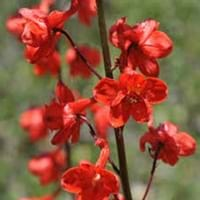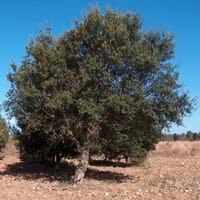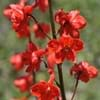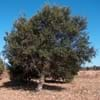Life Span
Perennial
Perennial
Type
Flowering Plants, Ornamental Plants, Shrubs
Shrub
Types
Not Available
Not Available
Number of Varieties
Not Available
Habitat
gardens, meadows
Hills, Lower slopes, open Woodlands
USDA Hardiness Zone
Not Available
4-8
Sunset Zone
Not Available
A3, 1a, 1b, 2a, 2b, 3a, 3b, 4, 5, 6, 7, 8, 9, 14, 15, 16, 17, 18, 19, 20, 21
Habit
Upright/Erect
Upright/Erect
Minimum Width
Not Available
Flower Color
Red, Rose
Light Green
Flower Color Modifier
Bicolor
Not Available
Fruit Color
Not Available
Brown, Light Green, Lime Green
Leaf Color in Spring
Green
Green, Light Green
Leaf Color in Summer
Light Green
Green, Light Green
Leaf Color in Fall
Green, Yellow green
Red
Leaf Color in Winter
Green, Light Yellow, Tan
Not Available
Leaf Shape
Palmate and toothed
Lobed
Plant Season
Spring, Summer, Fall, Winter
Spring, Summer, Fall, Winter
Sunlight
Full Sun, Partial Sun
Full Sun, Partial Sun, Partial shade
Type of Soil
Clay, Loam, Sand
Clay, Loam, Sand
The pH of Soil
Acidic, Neutral, Alkaline
Acidic, Neutral, Alkaline
Soil Drainage
Well drained
Well drained
Bloom Time
Not Available
Late Spring, Early Summer
Tolerances
Heat And Humidity
Drought, Salt
Where to Plant?
Ground, Pot
Ground, Pot
How to Plant?
Seedlings, Stem Cutting
Seedlings
Plant Maintenance
Medium
Low
Watering Requirements
It cannot sustain wet-feet, Keep ground moist, Requires regular watering, Water more in summer
Average Water Needs, Requires regular watering, Requires watering in the growing season
In Summer
Lots of watering
Lots of watering
In Spring
Moderate
Moderate
In Winter
Average Water
Average Water
Soil pH
Acidic, Neutral, Alkaline
Acidic, Neutral, Alkaline
Soil Type
Clay, Loam, Sand
Clay, Loam, Sand
Soil Drainage Capacity
Well drained
Well drained
Sun Exposure
Full Sun, Partial Sun
Full Sun, Partial Sun, Partial shade
Pruning
Cut away fading foliage, Do not prune during shooting season, Remove damaged leaves, Remove deadheads
Not Available
Fertilizers
High-phosphorous fertilizers used, Organic Flower Fertilizer
No fertilizers needed
Pests and Diseases
Bacterial leaf spot, fungus, Mealybugs
Red blotch, Spider mites
Plant Tolerance
Heat And Humidity
Drought, Salt
Flowers
Yes
Insignificant
Flower Petal Number
Single
Single
Foliage Texture
Fine
Medium
Foliage Sheen
Matte
Matte
Attracts
Butterflies
Birds
Allergy
Severe allergen, Skin irritation, Skin rash, Throat itching, Vomiting
Asthma
Aesthetic Uses
Beautification, Borders, Showy Purposes, Used for decorating walls, fences, gates, hedges, etc.
Landscape Designing
Beauty Benefits
Not Available
Not Available
Environmental Uses
Air purification
Air purification, Forms dense stands, Nesting sites for birds, No fertilizer, pesticides, or herbicides needed, Prevent Soil Erosion, Shadow Tree, Windbreak
Medicinal Uses
Not Available
Not Available
Part of Plant Used
Flowers
Bark, Stem
Other Uses
Used in making blue ink
Used as firewood, Used for woodware, Used in biomass, Used in construction, Used in Furniture, Wood is used for ship building, Wood is used in construction, Wood log is used in making fences
Used As Indoor Plant
No
No
Used As Outdoor Plant
Yes
Yes
Garden Design
Edging, Feature Plant
Cutflower, Feature Plant, Foundation, Hedges, Mixed Border, Screening, Wind Break
Botanical Name
Delphinium cardinale
EUONYMUS phellomanus
Common Name
Scarlet larkspur, Cardinal larkspur
Cork Oak
In Hindi
लाल रंग Delphinium
कॉर्क ट्री
In German
Scarlet Delphinium
Cork Tree
In French
Scarlet Delphinium
Arbre de Cork
In Spanish
Scarlet Delphinium
Árbol de corcho
In Greek
Scarlet Δελφίνιο
Cork Tree
In Portuguese
Scarlet Delphinium
Cork Tree
In Polish
Scarlet Delphinium
Cork Tree
In Latin
Delphinium coccino
Cork ligno
Phylum
Tracheophyta
Anthophyta
Class
Magnoliopsida
Dicotyledonae
Order
Ranunculales
Fagales
Family
Ranunculaceae
Celastraceae
Clade
Angiosperms, Eudicots
Angiosperms, Eudicots, Rosids
Tribe
Not Available
Mirini
Subfamily
Not Available
Mirinae
Number of Species
Not Available
Importance of Scarlet Delphinium and Cork Tree
Want to have the most appropriate plant for your garden? You might want to know the importance of Scarlet Delphinium and Cork Tree. Basically, these two plants vary in many aspects. Compare Scarlet Delphinium and Cork Tree as they differ in many characteristics such as their life, care, benefits, facts, etc. Every gardener must at least have the slightest clue about the plants he wants to plant in his garden. Compare their benefits, which differ in many ways like facts and uses. The medicinal use of Scarlet Delphinium is Not Available whereas of Cork Tree is Not Available. Scarlet Delphinium has beauty benefits as follows: Not Available while Cork Tree has beauty benefits as follows: Not Available.
Compare Facts of Scarlet Delphinium vs Cork Tree
How to choose the best garden plant for your garden depending upon its facts? Here garden plant comparison will help you to solve this query. Compare the facts of Scarlet Delphinium vs Cork Tree and know which one to choose. As garden plants have benefits and other uses, allergy is also a major drawback of plants for some people. Allergic reactions of Scarlet Delphinium are Severe allergen, Skin irritation, Skin rash, Throat itching and Vomiting whereas of Cork Tree have Asthma respectively. Having a fruit bearing plant in your garden can be a plus point of your garden. Scarlet Delphinium has no showy fruits and Cork Tree has showy fruits. Also Scarlet Delphinium is flowering and Cork Tree is not flowering . You can compare Scarlet Delphinium and Cork Tree facts and facts of other plants too.





